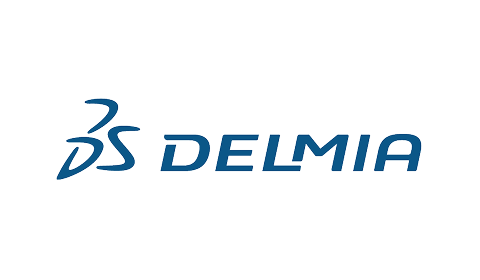Innovation isn’t just about bold ideas; it’s about surviving in a world where the pace of change is outstripping your roadmap.
In 2025, product development is the battleground for business transformation. Whether you’re leading the charge in digital innovation, optimizing supply chains, or building customer-centric platforms, the pressure to stay ahead of the curve is relentless.
McKinsey reveals that companies excelling at product innovation outperform their peers by 2.4x in revenue growth and 1.9x in shareholder returns. Yet, despite the vision, many struggle to scale because they miss the critical difference between fleeting experiments and lasting innovation.
So, what does a truly timeless, impactful product innovation look like? How can you apply the same strategies that have reshaped entire industries?
In this blog, we explore 7 innovative product development that redefined markets. These insights reveal core principles of lasting innovation, empowering you to craft smart, tailored strategies that drive growth, whether scaling, launching, or transforming your product.
What defines a truly innovative digital product?
A truly innovative digital product is far more than a set of modern features, it’s a strategic enabler that redefines how value is created, delivered, and scaled. It introduces a distinct value proposition by personalizing experiences, enhancing decision-making, and accelerating outcomes.
Beyond operational gains, it creates momentum by transforming internal processes into intelligent, adaptive systems. Most importantly, it opens the door to entirely new business models, from service-led strategies and direct-to-customer engagement to digital platforms that generate ongoing value.
This kind of product doesn’t just improve performance; it expands what the business can achieve. It’s where visionary thinking and thoughtful execution come together to build a more agile, competitive, and future-ready enterprise.
1. Innovation starts by solving what truly matters
The most impactful digital products address deep, unmet user needs, challenges that are often ignored or poorly solved. Innovation isn’t about chasing trends; it’s about empathy. By understanding what users struggle with at their core, businesses can create solutions that drive real engagement and loyalty.
When products are built around genuine pain points, they’re not just functional, they're meaningful. This clarity of purpose is what transforms technology into innovation and sets the stage for sustainable product success.
2. Delivers a unique and differentiated value proposition
In today’s crowded market, offering something slightly better isn’t enough. Innovative products redefine expectations by delivering a unique value proposition that competitors can’t easily mimic. This differentiation must resonate on both functional and emotional levels, solving real problems while also inspiring confidence, ease, or delight.
Whether it’s through an inventive feature, a bold business model, or a new way to tackle an old problem, the result must be clear, compelling, and hard to ignore. That’s how products become category leaders and stay relevant in evolving markets.
3. Leverages emerging or transformational technology
Innovation often stems from emerging technologies that open entirely new possibilities. AI, IoT, blockchain, and other next-generation technologies are not just buzzwords, they are enablers of groundbreaking change. The most innovative products leverage these technologies to unlock new capabilities, enhance user experiences, or provide functionalities that were once impossible.
However, it’s important to note that it’s not about using technology for the sake of it. It’s about using technology strategically to enhance value. Whether it’s AI-driven insights, IoT connectivity, or blockchain security, the goal is to integrate the right technology in a way that aligns with user needs and business objectives. This fusion of innovation and technology transforms a simple product into a disruptive force in the market.
4. Offers a seamless, intuitive user experience
A truly innovative digital product doesn’t just function well, it feels effortless to use. Seamless, intuitive user experience (UX) is essential to driving adoption, engagement, and long-term loyalty. From responsive design and fast performance to context-aware interactions, every touchpoint must eliminate friction and anticipate user behavior.
Innovation thrives when users don’t need instructions, they just know how it works. In today’s competitive landscape, where experience often trumps features, intuitive UX isn’t an enhancement, it’s a strategic advantage and a core pillar of innovative product development that sets leaders apart.
5. Drives measurable customer and business impact
True innovation is not abstract, it’s results driven. A truly innovative product generates measurable business outcomes that directly contribute to the company’s success. Whether it’s increasing efficiency, driving higher sales, boosting customer engagement, or enabling new revenue streams, the impact of innovation should be tangible and quantifiable.
Furthermore, the impact extends beyond just the bottom line, it also creates value for users. When a product drives customer satisfaction, it leads to loyalty, advocacy, and increased lifetime value. Therefore, the value of innovation can be assessed from both customer and business perspectives, ensuring that the product delivers substantial, sustained benefits.
6. Scales into a platform or ecosystem
Innovation is rarely static. The most innovative products don’t stop at being singular solutions, they evolve into platforms or ecosystems that provide continuous value. This scalability allows a product to adapt, grow, and integrate with other products, services, and technologies. It transforms a standalone product into a central hub that connects users, developers, and partners, creating an ecosystem of value.
For a product to be truly innovative, it needs to offer the potential to expand and grow over time, driving additional innovation and creating new opportunities for its users. The ability to scale ensures that the product remains relevant and competitive in a rapidly changing digital landscape.
7. Adapts through built-in intelligence and agility
The digital world is in a constant state of flux. To remain innovative, products must be adaptive. Products that incorporate built-in intelligence and agility can evolve based on data insights, user feedback, and market shifts. These products are not fixed but continuously improve and adapt to meet changing user needs and emerging trends.
This adaptability ensures the product remains relevant over time, keeping pace with industry advancements and user expectations. A product that can adjust in real-time offers sustained value, ensuring it continues to meet its objectives and stays ahead of competitors.
The 7 most innovative product development examples of all time
Innovative product development is about more than creating new products; it’s about shaping industries, setting new standards, and unlocking new possibilities. These groundbreaking innovations reveal how visionary thinking can pave the way for transformative progress and inspire your next breakthrough.
1. Zoho Inventory: Smart inventory & order management
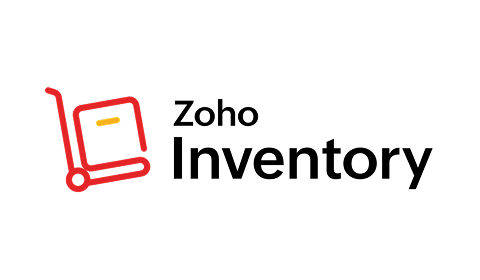
What it is & who it’s for
Zoho Inventory is a robust, cloud-native inventory and order management solution tailored for manufacturers, distributors, and retailers. It is specifically designed to help businesses manage complex inventory workflows, streamline multi-channel sales, and ensure seamless order fulfillment. This platform suits organizations grappling with inventory visibility challenges across online and offline sales channels.
What problem it’s solving
In today’s omnichannel retail landscape, businesses face increasing complexity, from managing stock levels across various sales platforms to fulfilling orders efficiently and maintaining accurate data. Inventory inaccuracies often lead to lost sales, overstocking, or stockouts, severely impacting customer satisfaction and profitability.
Zoho Inventory solves these critical pain points by centralizing inventory data, automating stock updates in real time, and providing intelligent insights to optimize reorder levels, all while integrating effortlessly with marketplaces, shipping services, and accounting software.
Why it’s innovative
Zoho Inventory stands out through its seamless integration capabilities and intelligent automation. Its real-time synchronization across channels eliminates manual errors and reconciles inventory in a dynamic, ever-changing environment.
The platform leverages AI-driven analytics and predictive insights that proactively flag potential stock shortages and demand spikes, enabling businesses to act before disruptions occur. This modular, scalable approach empowers organizations to evolve their supply chain operations while maintaining full control and visibility, transforming traditional inventory management into a strategic growth lever.
What can businesses learn or adapt from it
For businesses navigating the increasing complexity of multi-channel sales, adopting Zoho Inventory’s centralized and automated approach offers critical lessons. Investing in real-time data integration and predictive analytics can turn inventory management from a reactive chore into a proactive advantage.
The ability to scale operations without sacrificing accuracy or speed is essential to maintaining customer trust and operational agility in a competitive marketplace. Ultimately, this platform exemplifies how innovation in inventory control supports broader digital transformation initiatives and drives sustainable growth.
2. Certilogo: Secure product authentication
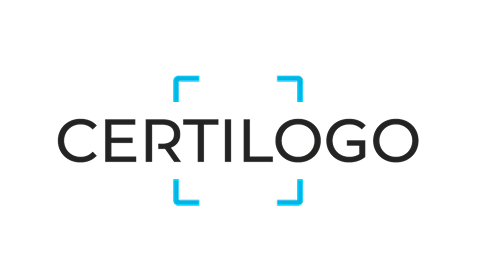
What it is & who it’s for
Certilogo is a cutting-edge digital authentication platform offering secure product passports that verify authenticity throughout the product lifecycle. Designed for brands and retailers, particularly in fashion, luxury, and electronics, this platform combats counterfeit goods while enhancing consumer confidence and brand protection.
What problem it’s solving
Counterfeiting is a persistent threat that undermines brand value, inflates return rates, and erodes consumer trust. In a marketplace flooded with knock-offs, customers demand easy, reliable ways to confirm product authenticity.
Certilogo resolves this by enabling brands and consumers to instantly verify products through unique digital IDs, effectively reducing fraud and safeguarding the brand’s reputation.
Why it’s innovative
Certilogo’s innovation comes from its fusion of secure tagging technologies with user-friendly digital verification. Its product passports go beyond simple authentication, they capture detailed information about the product’s origin, ownership, and lifecycle.
This level of transparency offers a seamless connection between physical goods and digital assurance, something traditional anti-counterfeit measures cannot replicate at scale. The platform also enhances customer engagement by providing added value and transparency post-purchase.
What can businesses learn or adapt from it
The key takeaway for businesses is the transformative potential of digital authentication in building trust and reducing fraud-related losses. Brands that implement solutions like Certilogo signal a commitment to quality and accountability, which resonates deeply with today’s discerning consumers.
By integrating product passports, retailers and manufacturers can create stronger, more transparent relationships with customers, elevate brand integrity, and foster loyalty in an increasingly competitive landscape.
3. Experro: Composable digital experience and product discovery platform

What it is & who it’s for
Experro is a composable digital experience platform designed for retailers, manufacturers, and distributors facing the challenge of delivering personalized, seamless product discovery journeys. It empowers businesses to build flexible, AI-driven storefronts and digital touchpoints tailored specifically to niche customer needs, without the constraints of traditional monolithic eCommerce solutions.
What problem it’s solving
In today’s fast-evolving market, customers expect hyper-personalized interactions and frictionless shopping experiences. Conventional platforms often lack agility, making it difficult to adapt quickly to shifting consumer demands or integrate emerging technologies.
Experro addresses this by enabling rapid customization, overcoming digital experience gaps, and bridging the disconnect between complex product catalogs and intuitive customer engagement.
Why it’s innovative
What sets Experro apart is its composable architecture, built on modular components that businesses can assemble, modify, or replace independently. This flexibility accelerates innovative product development cycles and allows seamless integration of AI-powered recommendations and real-time personalization.
Unlike rigid legacy systems, Experro fosters continuous evolution, enabling brands to stay ahead in a competitive landscape by adapting instantly to trends and customer insights.
What can businesses learn or adapt from it
The key takeaway for retailers, manufacturers, and distributors is to embrace composability and AI-driven personalization as strategic levers for growth. By shifting from one-size-fits-all platforms to flexible, modular solutions like Experro, businesses can create differentiated customer experiences that scale and evolve.
This mindset unlocks breakthrough innovation, reduces time-to-market, and ensures digital investments deliver practical, measurable impact aligned with business goals.
4. Resonance One: Agile on-demand manufacturing platform

What it is & who it’s for
Resonance One is a cutting-edge on-demand manufacturing and retail operations platform crafted for manufacturers and retailers prioritizing agility and customization. It targets businesses that need to bridge the gap between production and retail dynamically supporting just-in-time manufacturing, personalized product configurations, and reducing the financial burden of excess inventory.
What problem it’s solving
Traditional manufacturing models often struggle with rigidity, long lead times, inventory overstock, and limited responsiveness to fluctuating customer demands. This results in operational inefficiencies, increased costs, and missed market opportunities.
Resonance One addresses these challenges by seamlessly integrating manufacturing workflows with retail operations, enabling companies to manufacture products on demand, optimize production scheduling, and gain real-time insights into both inventory and sales performance.
Why it’s innovative
What differentiates Resonance One is its holistic approach to merging manufacturing and retail data into one platform, facilitating end-to-end operational visibility and control. Its composable digital architecture supports flexible workflows, enabling businesses to scale up or pivot production rapidly.
The platform’s ability to support personalized product offerings and on-demand manufacturing positions it as a transformative solution in an era where consumer expectations demand both speed and uniqueness.
What can businesses learn or adapt from it
Manufacturers and retailers can draw inspiration from Resonance’s One to rethink their operational models, not as siloed functions but as interconnected, responsive ecosystems
Embracing digital platforms that unify production and retail processes empowers businesses to reduce waste, improve cash flow, and deliver highly customized experiences that differentiate them in saturated markets.
This approach is vital for companies seeking to future-proof their operations against volatility while enhancing customer satisfaction through speed and personalization.
5. DELMIA: Digital twin for manufacturing
What it is & who it’s for
DELMIA is an advanced manufacturing operations platform that integrates digital twin technology, process simulation, and real-time production analytics. It is engineered for manufacturers, especially those in complex, high-mix industries, such as aerospace, automotive, and industrial machinery, that require precision, agility, and comprehensive process control.
What problem it’s solving
Manufacturing environments face continuous pressure to optimize resource utilization, reduce downtime, and maintain consistent quality amid rising complexity. Many companies operate with fragmented systems that limit visibility into production inefficiencies and prevent predictive maintenance.
DELMIA confronts these challenges by creating digital twins, virtual replicas of physical manufacturing processes, that allow detailed simulation, testing, and optimization in a risk-free environment before physical implementation.
Why it’s innovative
The innovation of DELMIA lies in its powerful combination of digital twin technology, AI-powered analytics, and an integrated ecosystem that brings together design, simulation, and operational data.
This fusion provides manufacturers unprecedented foresight into production outcomes, enabling smarter decision-making, enhanced collaboration, and accelerated innovation cycles. DELMIA shifts manufacturing from reactive troubleshooting to predictive optimization, which significantly improves productivity and reduces costs.
What can businesses learn or adapt from it
Businesses can leverage DELMIA’s approach to adopt a more holistic and forward-looking manufacturing mindset. Integrating digital twin technology with real-time operational data unlocks continuous improvement cycles and agile responses to changing market or supply chain conditions.
Manufacturers adopting this framework will benefit from greater flexibility, risk mitigation, and strategic alignment of production with business goals. It’s a blueprint for transforming complex manufacturing environments into smart, resilient, and innovative operations.
6. OpenSC: Blockchain-driven ethical supply chain transparency
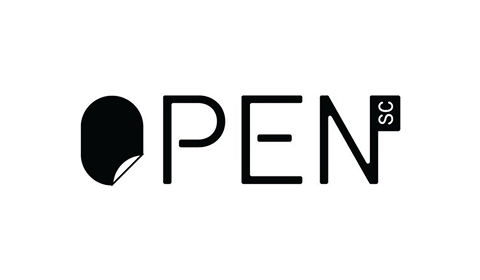
What it is & who it’s for
OpenSC is an advanced blockchain-enabled platform designed to bring full transparency and traceability to supply chains. It is specifically tailored for retailers, manufacturers, and distributors striving to meet the rising demand for ethical sourcing and sustainability.
By providing a verified, temper-proof record of product journeys, OpenSC empowers businesses committed to responsible practices.
What problem it’s solving
In today’s complex global supply chains, lack of transparency breeds inefficiency, risk, and distrust. Businesses struggle to validate claims about the origin, labor conditions, and environmental impact of their products.
OpenSC addresses these challenges by delivering a trustworthy and real-time view of every step, from raw materials to the final consumer, helping companies eliminate fraud, improve compliance, and meet evolving regulatory and consumer expectations.
Why it’s innovative
OpenSC’s innovation lies in its use of blockchain technology to create an immutable, decentralized ledger that captures every transaction and event transparently and securely. Unlike traditional supply chain management tools, OpenSC enables independent verification by all stakeholders, brands, suppliers, and customers alike.
Its modular design allows seamless integration with existing systems, creating a scalable framework for embedding sustainability and ethical standards into the core business processes.
What can businesses learn or adapt from it
Businesses can take away a vital lesson on the power of transparency as a strategic differentiator. By adopting blockchain-enabled traceability solutions like OpenSC, companies not only mitigate supply chain risks but also build deeper trust with conscious consumers.
The approach encourages brands to embed sustainability into their DNA, turning compliance into opportunity. Retailers and manufacturers should explore how such technologies can amplify their authenticity claims and foster long-term loyalty in a market where transparency is no longer optional but expected.
7. PTC Thingworx: Industrial IoT platform driving smart innovation
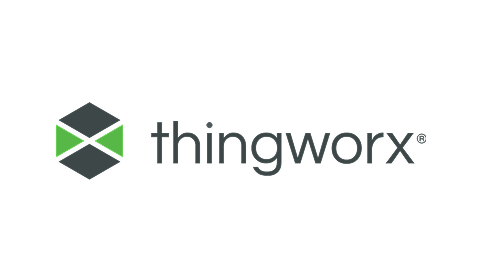
What it is & who it’s for
PTC Thingworx is an advanced Industrial Internet of Things (IIoT) platform designed for manufacturers, industrial enterprises, and service providers. It enables organizations to rapidly build and deploy connected solutions that integrate devices, systems, and data to optimize operations, enhance product performance, and unlock new revenue streams. Thingworx serves businesses focused on smart manufacturing, asset management, and digital transformation in heavy industries and supply chains.
What problem it’s solving
In complex industrial environments, managing diverse assets and equipment, ensuring operational efficiency, and reducing downtime are critical challenges. Legacy systems and siloed data hinder real-time visibility and decision-making. Thingworx addresses these challenges by offering a unified platform that connects physical assets to digital systems, enabling predictive maintenance, real-time monitoring, and operational intelligence, transforming raw data into actionable insights for faster, smarter decisions.
Why it’s innovative
Thingworx stands out through its rapid application development capabilities, flexible architecture, and built-in analytics. Its low-code environment empowers users to create tailored industrial IoT applications without extensive coding, accelerating time-to-value.
The platform integrates seamlessly with legacy systems, ERP, and cloud infrastructure, while advanced AI and machine learning capabilities enable predictive analytics and automated workflows, fostering continuous improvement and operational excellence.
What can businesses learn or adapt from it
For enterprises aiming to lead in the industrial digital revolution, embracing a platform like Thingworx means shifting from reactive to proactive operations. The key takeaway is to leverage connectivity, real-time data, and analytics to optimize asset lifecycle management and improve supply chain resilience.
Businesses can drive innovation by developing custom, scalable IoT solutions that enhance productivity, reduce costs, and create differentiated competitive advantages aligned with evolving market demands.
Bringing it all together: Innovation that moves you forward
Behind every breakthrough product is a story of intention, of teams that challenged assumptions, aligned bold ideas with execution, and treated innovation not as a side project, but as a core capability. The examples you’ve just explored emerged through strategy, clarity, and the right partnerships.
If you’re here, you’re already thinking beyond the next feature or release. You’re thinking about how to future-proof your digital products, scale with precision, and lead with impact. And in today’s dynamic environment, that requires more than vision, it calls for deep expertise, adaptive systems, and an end-to-end approach that turns complexity into opportunity.
That’s where we come in. At Rapidops, we’ve spent the last 16 years working alongside product, technology, and innovation teams to design and build intelligent platforms, personalized experiences, and scalable digital ecosystems. With capabilities across strategy, data, design, and engineering, we help organizations move from ambition to execution faster and with lasting impact.
You don’t need a vendor. You need a partner who gets the stakes, understands the systems, and can help you deliver outcomes that matter, today and into the future. Let’s explore what’s next. Book a strategy call to see how we can co-create a product that’s not only future-ready but built to lead.
Frequently Asked Questions
How can mid-sized enterprises drive product innovation with limited resources?
Mid-sized businesses can innovate by focusing on strategic, high-impact use cases instead of large-scale reinvention. Leveraging modular platforms, low-code tools, or AI-as-a-service can reduce upfront investment. Partnering with digital product firms like Rapidops allows businesses to co-develop custom solutions aligned with their scale, budget, and goals, without building large internal teams. Innovation is about solving real problems, not having the biggest budget.
How do you decide whether to innovate through internal teams or external partners?
Start by evaluating your team’s existing capabilities, bandwidth, and time-to-market goals. If internal teams lack deep product strategy, UX, or emerging tech expertise, co-building with an experienced partner accelerates outcomes and reduces risk. Many successful product innovations from mid-sized companies happen through blended models, internal leadership paired with external execution partners like Rapidops.
What role does customer feedback play in product innovation?
Customer feedback is the foundation of truly innovative product development. It helps uncover unmet needs, test hypotheses, and refine features in real time. Innovative companies use tools like in-app feedback, analytics, A/B testing, and customer interviews throughout the product lifecycle. This iterative, user-centered approach ensures the product continuously evolves to meet market demands.
What’s the biggest risk in launching an “innovative” product, and how do you avoid it?
The most common risk is building a solution that’s technically impressive but commercially irrelevant. Innovation must solve a clear user or business pain point. To avoid this, start with problem validation, create fast prototypes, and run pilot launches. Tie every innovation effort to measurable business outcomes like customer retention, revenue impact, or operational savings to stay on track.
How do I measure whether a product innovation is actually successful?
Innovation success should be measured by both business and user outcomes. Track KPIs like revenue growth, customer lifetime value, feature adoption, NPS scores, operational efficiency, and retention. Qualitative metrics, such as user satisfaction and employee enablement, also signal long-term success. The most innovative product development are not just novel, but valuable, scalable, and sustainable.

Rahul Chaudhary
Content Writer
With 5 years of experience in AI, software, and digital transformation, I’m passionate about making complex concepts easy to understand and apply. I create content that speaks to business leaders, offering practical, data-driven solutions that help you tackle real challenges and make informed decisions that drive growth.

Let’s build the next big thing!
Share your ideas and vision with us to explore your digital opportunities
Similar Stories
- Strategy
- undefined Mins
- February 2017

- Trends
- undefined Mins
- April 2022


Receive articles like this in your mailbox
Sign up to get weekly insights & inspiration in your inbox.

